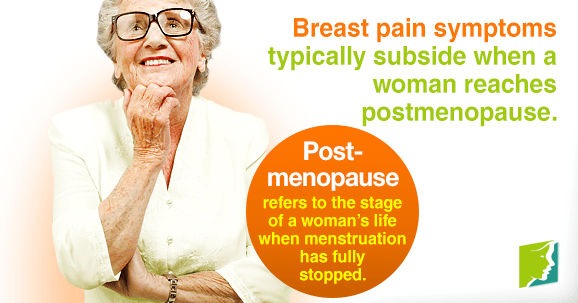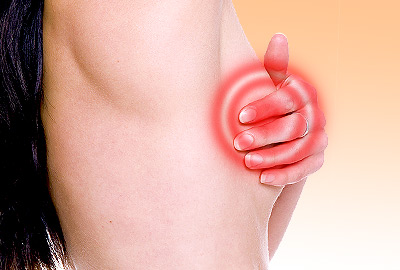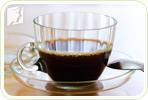Breast pain is defined by the overall feeling of discomfort, tenderness, or aching in one or both breasts. The principal cause of breast pain symptoms during menopause is hormone fluctuations. These hormonal changes cause inflammation of the breast tissue, resulting in pain. Breast pain symptoms can include sensitivity, burning, and swelling. Cyclical breast pain is the most common type of breast pain, and is linked to a woman's menstrual cycle and hormones. Breast pain typically affect premenopausal and perimenopausal women, but postmenopausal women are also susceptible.
Causes
As previously mentioned, fluctuations of the hormones estrogen and progesterone are the most common cause of breast pain. This cyclical breast pain is directly linked to a woman's menstrual cycle, meaning she experiences pain with the fluctuation of hormones every month. Exercise can also cause breast pain. Any excessive movements of the breasts can cause soreness, so it is important to wear a well-fitting, supportive sports bra while exercising.
Non-cyclical breast pain can include anything from breast cysts and poor diet to medicinal side effects, usually from oral contraceptives, antidepressants, and heart medication. Alcohol, caffeine, and foods high in sodium and saturated fats are all potential breast pain triggers and should be avoided.
When Does it Stop?
Breast pain typically affect premenopausal and perimenopausal women, when their hormones are constantly in flux. Breast pain symptoms typically subside when a woman reaches postmenopause, when her hormone levels have decreased and leveled out.
Postmenopause refers to the stage of a woman's life when menstruation has fully stopped, which occurs one year after their last menstrual period. In the United States, the average age in which postmenopause occurs is 51; however, it varies depending on the woman's genetics and lifestyle. During postmenopause, a woman's hormone levels decline and stay consistently low. Menopausal symptoms, like breast pain, typically begin to lessen during this time.
Treatment Options
In the meantime, there are several effective ways to help ease breast pain. The key is to try and restore hormone balance, which can be done a number of ways. Exercising is a great way to relieve stress and minimize menopausal symptoms, like breast pain. Yoga, walking, swimming, and cycling are all good low-impact workouts that are beneficial for easing breast pain. Make sure to wear a supportive, properly-fitted bra when doing any kind of physical activity to prevent pain and tenderness.
Several home remedies that may be helpful in lessening breast pain include applying cold compresses to the breasts, taking a warm bath with essential oils, and wearing loose cotton clothing.
Maintaining a proper diet is essential to looking and feeling your best, as well as for preventing breast pain. Try to include as all of the food groups into a daily diet - protein, fruits and vegetables, complex carbohydrates, good fats, and dairy. Eating right will not only prevent breast pain, but will also maintain optimal energy levels throughout the day.
Breast pain symptoms affect around 70% of women at some point, and can interfere with daily life. The leading cause of breast pain in women is hormone fluctuations, but things like diet, insufficient exercise, and certain medications can also trigger breast pain. Eating healthy and getting regular exercise are helpful ways to reduce breast pain.
Sources
- National Health Service UK. (2012). Cyclical Breast Pain. Retrieved August 26, 2014, from http://www.nhs.uk/conditions/breastpaincyclical/pages/introduction.aspx
- National Health Service UK. (2014). Menopause. Retrieved August 26, 2014, from http://www.nhs.uk/conditions/menopause/pages/introduction.aspx
- National Institute on Aging. (2012). Hormones and Menopause. Retrieved August 26, 2014, from http://www.nia.nih.gov/health/publication/hormones-and-menopause
- University of Maryland Medical Center. (2012). Breast pain. Retrieved August 26, 2014, from http://umm.edu/health/medical/ency/articles/breast-pain




